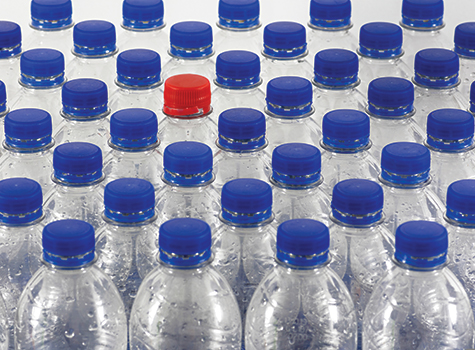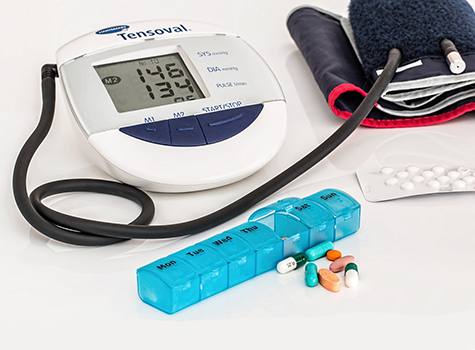By Parul Kharod

Microplastics and nano plastics are very tiny plastic particles which get into our body through various sources.
Why is this important?
Ongoing research shows that microplastics cause damage to the human cells and tissues, affecting the reproductive system, endocrine system, the immune system, and more.
• Cell damage can lead to inflammation and increased cases of food allergies and food sensitivities
• Reproductive system changes can cause infertility and/or changes in fetal growth and brain development
• Endocrine disruptions cause hormone imbalances affecting puberty and menopause, thyroid, and appetite regulations
• Inflammation also increases risk of diseases such as diabetes, heart disease, and obesity
• Immune system changes can cause more allergic reactions, oxidative stress, and increased risk of cancer
• Research shows possible connections to mood disorders including anxiety, depression, anger issues, and attention deficit disorders
Once microplastics enter our body, it is extremely hard to remove them. They stay in our body and continue to cause damage. They can also absorb other harmful chemicals, further weakening the immune system and causing tissue damage. Therefore, the best way to reduce damage from microplastics is to limit getting it into our system in the first place.
Sources of Plastics and Microplastics
• Plastic containers – This is a big one, especially for our South Asian community!
• Home catering, Takeout Restaurant Food, Leftover Party Food – this is probably the largest source of plastics in our community. How many of us have the 8 oz or 16 oz clear plastic containers that were filled with food?
• Packaged ready to eat foods such as yogurt, idli-dosa batters, frozen foods, etc.
• In our in-built mindset to save money, we reuse these plastic dabbas for yogurt, and any other such store-bought containers to pack leftovers at home
• Grocery store bags – Plastic bags from grocery stores, plus the thin small plastic bags we use to get vegetables
• Bottled Water and other beverages – Water and other drinks such as juices all come in plastic bottles. Water bottles are used not just at home, but more frequently in home parties and get-togethers and business meetings
• Packaged snacks – All packaged snacks from American and Desi stores are all made from plastic materials
Besides these obvious sources, you may be surprised to know a few other sources of Microplastics:
Fish & seafood: Oceanographers have been studying the global waters and have found twenty-four trillion pieces of microplastics in the ocean and counting! If you choose to eat fish or shellfish, you are ingesting some of these microplastics.
Tea bags: Most tea bags are made from plastic, so if you use any boxed/bagged teas, you may be getting some of these microplastics.
Fruits and Vegetables: Besides being packed in plastic bags and plastic shell containers, fruits and vegetables may also absorb plastics through their roots from the soil.
Beer: Beer is made from water and crops such as wheat, which both contain microplastics due to plastic pollution. There are about twenty-eight microplastic particles per liter of beer which outpaces other drinks such as soda, iced tea, and energy drinks.
Condiments: Ketchup and other sauces and seasonings come in plastic bottles.
What can we do?
It is quite a grim picture what we are doing to our planet and to our bodies. How can we attempt to save ourselves?
• Get educated – The theme for Earth Day this year is Planet versus Plastics! To join earthday.org’s effort to achieve a 60% reduction in plastics by 2040. Sign a petition and urge companies to reduce plastic packaging.
• Use reusable water bottles – Carry your glass or metal bottle everywhere you go. For parties and get-togethers, avoid buying plastic water bottles for everyone. Ask people to bring their own reusable water bottles or steel glasses.
• Reduce plastic cutlery and plates – host an environmentally friendly party – ask your guests to bring their own dinner plates and cutlery or serve food in washable plates if possible. Use compostable plates.
• Reduce plastic trash bags – Stack disposable plates to reduce the number of trash bags used at parties. Compost if possible.
• Take cloth bags when you go shopping – Keep a stack of cloth bags in your car. There are also cloth bags available for buying produce to avoid getting thin plastic bags for vegetables. Get as many reusable items as you can. If you forget to take your own bags, choose paper over plastic.
• Shop for produce at farmer’s markets thus reducing the plastic packed produce containers.
• Home caterers and restaurant owners – Perhaps have a meeting about what you can do you reduce plastic containers. Remember how years ago milk and soda used to be sold in glass bottles? We would get money back when we returned the bottles! Perhaps something like that may be needed, where food is packed in reusable steel or glass containers and people get a discount for returning and extra charge for not returning the containers?
• Reduce packaged processed foods – It is not only healthy for our body but also good for the environment.
• Eat more beans – Reduce animal proteins and eat more beans. The growing and cultivation of beans adds nitrogen and other important minerals to the soil. Beans use significantly less amount of water, land, and petroleum than livestock, and they do not pollute the planet with harmful byproducts like methane, and other greenhouse gases.
Every little step helps. Let us all take a pledge to reduce plastic use in our own daily lives and help further this movement by encouraging friends and neighbors to do the same.
Parul Kharod is a registered dietitian and licensed nutritionist and works as a Clinical Dietitian. She can be reached at [email protected]



